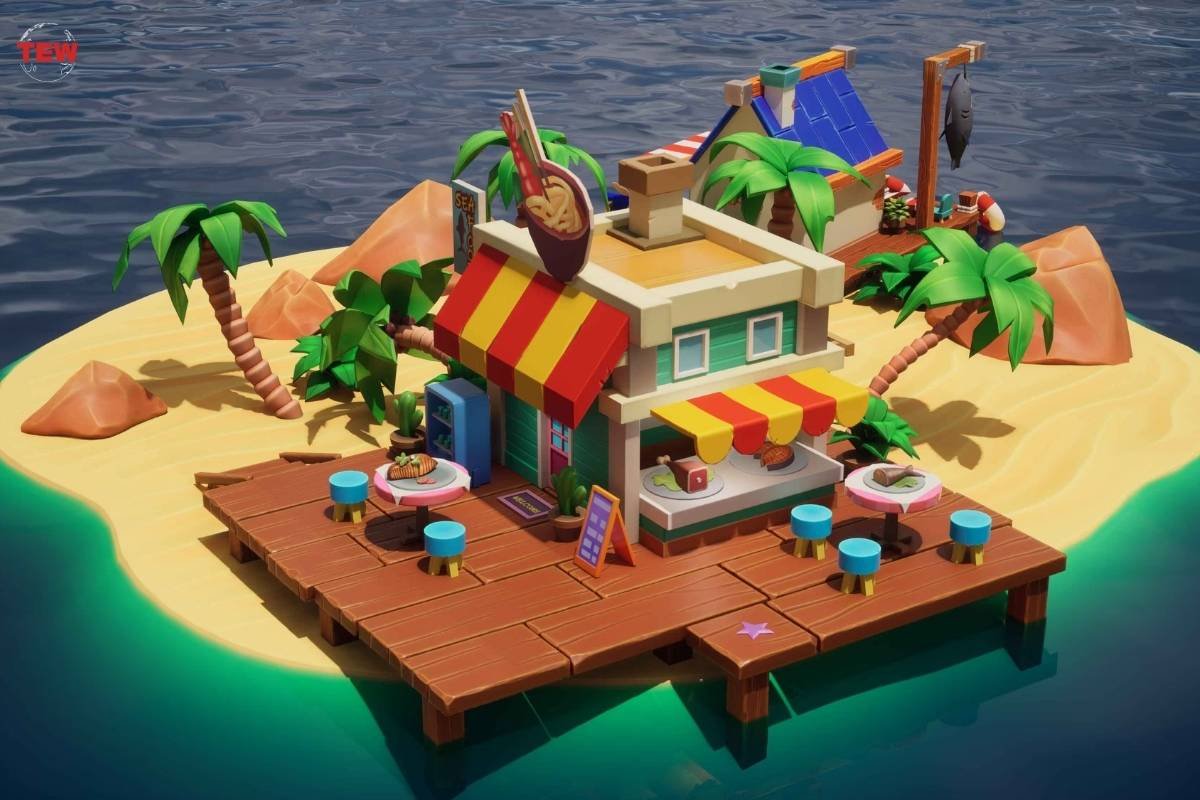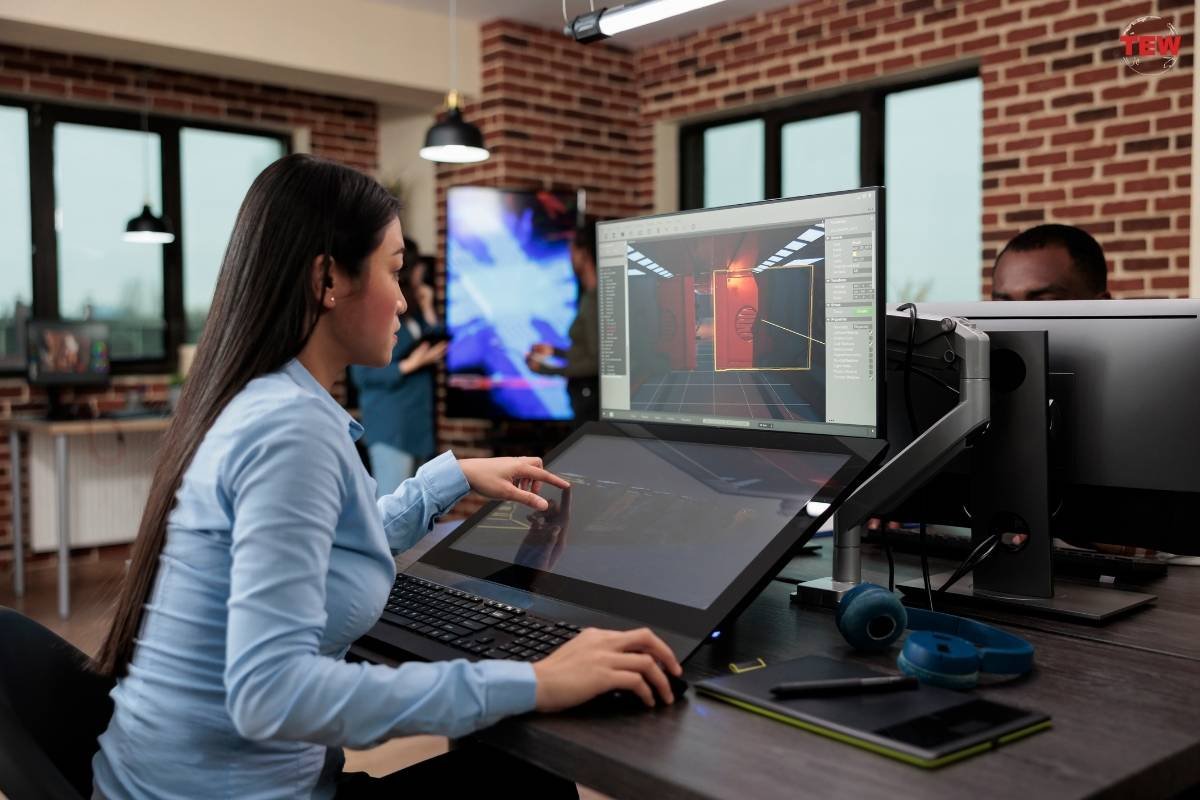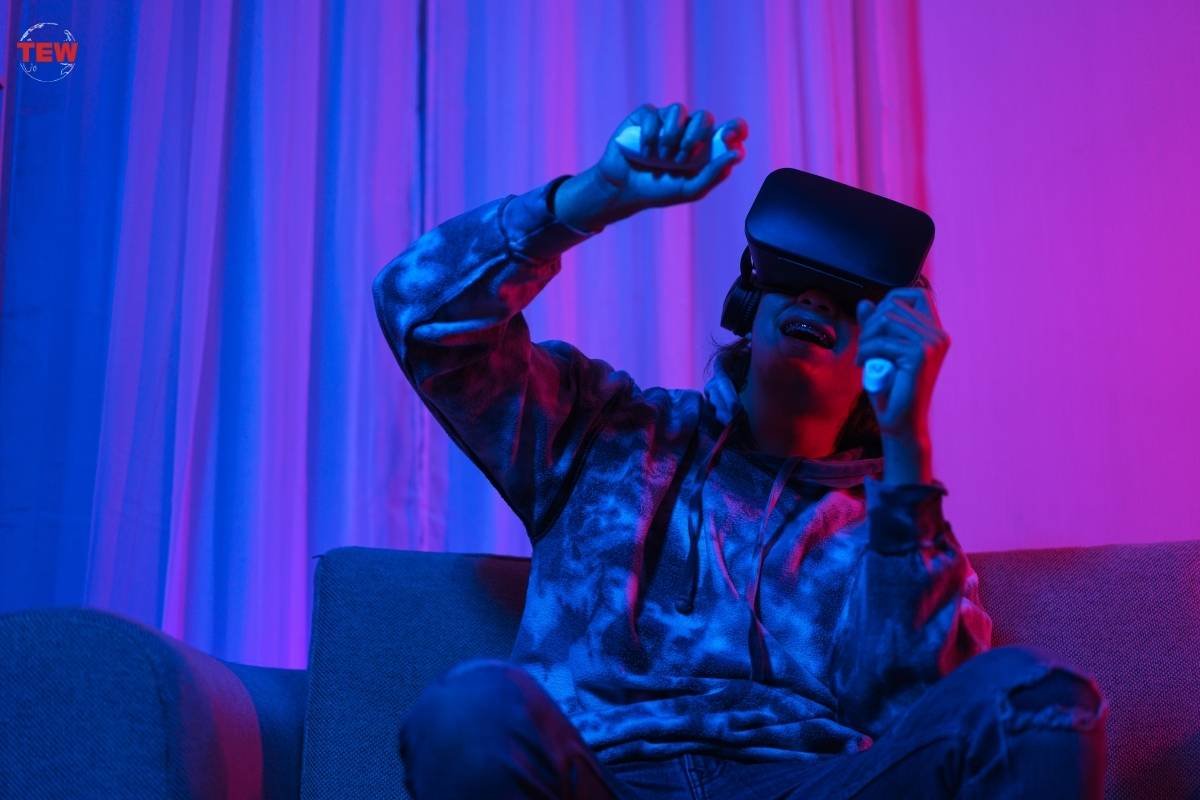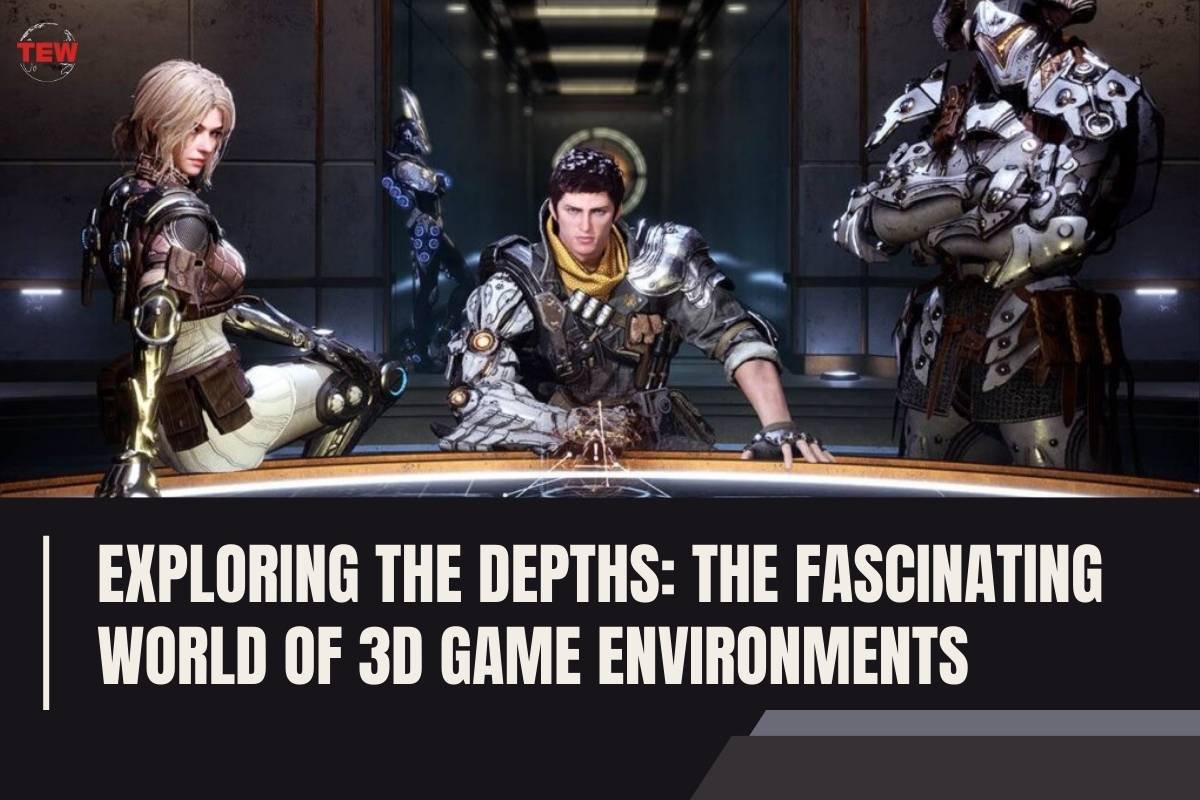(Source – GamesCreed)
In the ever-evolving landscape of video gaming, one aspect stands out as a cornerstone of immersive experiences: 3D video game environments. These electronic realms serve as the canvas upon which gamers embark on impressive experiences, resolve elaborate challenges, and take part in heart-pounding battles. In this extensive expedition, we dive deep into the ins and outs of 3D game environments, unwinding their production process, examining their impact on gameplay, and pondering their future evolution. You can always learn more about 3d environment design for games.
Introduction to 3D Game Environments
At its core, a 3D game environment is a thoroughly crafted electronic space that welcomes players to step into fantastical worlds overflowing with life and exhilaration. Unlike their 2D equivalents, which are constrained to level airplanes, 3D game environments supply depth, range, and interactivity that blur the line in between fiction and truth. From stretching landscapes to delicately designed cities, these environments work as the background for a large range of gaming experiences, from action-packed journeys to thought-provoking narratives.
The change from 2D to 3D game environments marked a standard shift in video gaming, opening up brand-new possibilities for narration, gameplay mechanics, and gamer immersion. With advancements in technology and the proliferation of powerful video game engines, programmers have had the ability to develop progressively lifelike and vibrant environments that mesmerize players and attract them into richly in-depth worlds teeming with possibilities.
Elements of a 3D Game Environments

A 3D game environment is comprised of a number of crucial elements that work in harmony to develop a cohesive and immersive experience for gamers. At its structure exists the terrain and landscapes, which offer the background for the player’s journey. Whether it’s going across snow-capped mountains, navigating dense forests, or checking out sprawling deserts, the surface establishes the stage for impressive experiences and exploration.
Complementing the terrain are structures and buildings that populate the video game world, varying from enchanting homes to towering high-rise buildings. These architectural marvels not just function as waypoints for players yet also add to the general ambience and visual of the environment. Whether players are scaling the walls of a medieval castle or slipping with the alleyways of a futuristic metropolitan area, the style plays a pivotal function fit their experience.
Obviously, no game environment would certainly be total shapeless and creatures that populate the globe. From brave heroes to fearsome beasts, these computer animated entities breathe life right into the environment and offer gamers with allies to assist them on their journey or adversaries to overcome. Whether taking part in impressive fights or building not likely alliances, the communications between characters and creatures add deepness and intricacy to the game globe.
Along with characters, props and interactive objects play a vital function fit the player experience. Whether it’s discovering concealed prizes, solving intricate problems, or possessing powerful tools, these interactive elements offer gamers with company and autonomy within the video game world. From ancient relics to advanced gadgets, the possibilities are endless, enabling gamers to unleash their creative thinking and form the result of their adventures.
Rounding out the aspects of a 3D game environment are atmospheric results such as climate, lighting, and audio. From the mild rustle of fallen leaves in the wind to the deafening roar of an electrical storm, these ecological results offer to improve the immersion and realism of the video game world. Whether basking in the warm radiance of a sundown or braving the cooling winds of a snowstorm, players are carried to globes where every detail adds to the overall atmosphere and state of mind.
Creation Process
The creation of a 3D game environment is a multi-faceted and repetitive process that calls for mindful preparation, technical know-how, and innovative vision. It starts with the conceptualization and design phase, where designers conceptualize ideas, create concept art, and specify the look of the atmosphere. Whether drawing ideas from real-world places or conjuring up fantastical worlds from square one, this preliminary phase lays the foundation for the entire project.
With a clear vision in mind, programmers move on to the modeling and texturing phase, where they bring their concepts to life in the electronic realm. Using specialized software such as Blender or food processor, Maya, or 3ds Max, artists develop comprehensive 3D models of things, personalities, and settings, paying very close attention to scale, percentage, and detail. Once the models are total, textures are put on provide realistic surface areas and products, including depth and richness to the environment.
Next comes the rigging and computer animation phase, where personalities and items are imbued with life and movement. Making use of skeletal structures and animation rigs, artists develop fluid and believable animations that bring personalities to life and make things interactable. Whether it’s the stylish activities of a hero in battle or the refined swaying of trees in the wind, animations play an essential duty in immersing gamers in the video game globe and sharing narrative and gameplay mechanics.
Ultimately, the produced properties are integrated right into a game engine such as Unity or Unreal Engine, where they are combined with code, audio, and other aspects to develop a fully interactive experience. Video game engines offer developers with powerful tools and sources for rendering 3D game environments in real-time, carrying out gameplay technicians, and optimizing efficiency for various platforms and gadgets. Through precise screening and model, developers tweak every element of the environment to ensure a smooth and immersive experience for players.
Tools and Technologies

The creation of 3D game environments count on a variety of tools and modern technologies that encourage programmers to bring their visions to life with extraordinary realism and fidelity. At the leading edge are 3D modeling software such as Blender, Maya, and 3ds Max, which provide musicians with intuitive user interfaces and effective attributes for developing and adjusting 3D possessions. Whether shaping complex details or painting practical textures, these devices work as the foundation of the setting production process.
In addition to modeling software, texture painting devices such as Compound Painter and Photoshop play a critical role in including deepness and splendor to 3D versions. From weather-beaten rock to lush foliage, these devices enable musicians to apply structures and products with unequaled precision, bringing their developments to life with stunning aesthetic integrity.
Animation software application such as Autodesk MotionBuilder enables artists to breathe life into characters and items through dynamic and expressive animations. Whether it’s the elegant activities of a professional dancer or the frenetic action of a battle scene, these devices supply musicians with the versatility and control to produce computer animations that mesmerize and influence.
Naturally, none of these tools would certainly be full without the underlying game engines that power them. Unity and Unreal Engine stand out as 2 of one of the most prominent and commonly used video game engines, giving designers with powerful tools and resources for developing, providing, and enhancing 3D game environments. From dynamic lighting and physics simulations to innovative AI and networking abilities, these engines equip designers to produce immersive and interesting experiences that press the borders of what’s feasible in video gaming.
Challenges and Considerations
While the development of 3D game environments supplies limitless possibilities for creative thinking and expression, it likewise offers a host of difficulties and factors to consider that designers should browse. Among one of the most important difficulties is optimization for efficiency, particularly in resource-intensive games with big, open-world environments. Balancing visual integrity with gameplay demands is a fragile dance, needing developers to make compromises between visual high quality and efficiency to make certain a smooth and satisfying experience for gamers on a wide range of equipment configurations.
Compatibility throughout various platforms and devices is another factor to consider that designers should take into consideration when producing 3D game environments. Whether targeting computer, console, or mobile platforms, programmers should ensure that their video games run efficiently and regularly throughout a variety of hardware configurations and operating systems. This frequently includes maximizing assets, tweaking settings, and applying platform-specific functions to ensure a smooth experience for players despite their selected system.
Taking care of data sizes and memory use is yet another challenge that designers encounter when producing 3D settings, specifically in games with huge, sprawling globes and high-resolution possessions. With the ever-increasing needs for graphical fidelity and immersion, developers have to locate innovative methods to compress properties, enhance appearances, and stream web content dynamically to minimize lots times and make the most of efficiency.
Despite these obstacles, the attraction of producing immersive and captivating 3D environments continues to drive innovation and push the boundaries of what’s possible in video gaming. With developments in technology and the continuous advancement of game engines and devices, designers are positioned to create increasingly realistic and dynamic environments that astound players and deliver them to worlds beyond their wildest creative imagination.
Trends and Innovations

In recent times, a number of trends and innovations have emerged that are forming the future of 3D video game settings and pressing the limits of what’s possible in video gaming. Among one of the most remarkable patterns is the surge of step-by-step generation strategies, which permit designers to create large and varied environments dynamically. Whether generating sensible terrain, occupying globes with vegetation and animals, or creating intricate dungeons, procedural generation enables developers to develop expansive and immersive settings with very little hands-on treatment.
An additional fad that’s forming the future of 3D game settings is the improvement of real-time ray tracing modern technology. With the capability to simulate the behavior of light in real-time, ray mapping makes it possible for programmers to accomplish sensational visual impacts and unmatched realistic look in their video games. From natural representations and refractions to vibrant global illumination and practical shadows, ray tracing innovation adds a brand-new level of immersion and integrity to 3D settings, allowing gamers to experience pc gaming like never ever before.
The assimilation of virtual reality (VR) and increased fact (AR) technologies is yet an additional pattern that’s changing the landscape of 3D video game settings. With VR headsets ending up being extra available and cost effective, programmers are exploring brand-new means to develop immersive and interactive experiences that carry gamers to worlds beyond their imagination. Whether discovering old ruins in VR or battling hordes of zombies in AR, these technologies provide new avenues for storytelling, gameplay, and gamer involvement.
User-generated content and modding areas are additionally playing a significantly vital function in shaping the future of 3D video game settings. With the spreading of devices and resources for creating and sharing custom content, players are equipped to produce their own globes, personalities, and journeys, increasing the opportunities for creative thinking and expression in video gaming. Whether developing personalized degrees, producing new characters, or crafting unique gameplay auto mechanics, these communities are driving development and pressing the limits of what’s possible in video game design.




